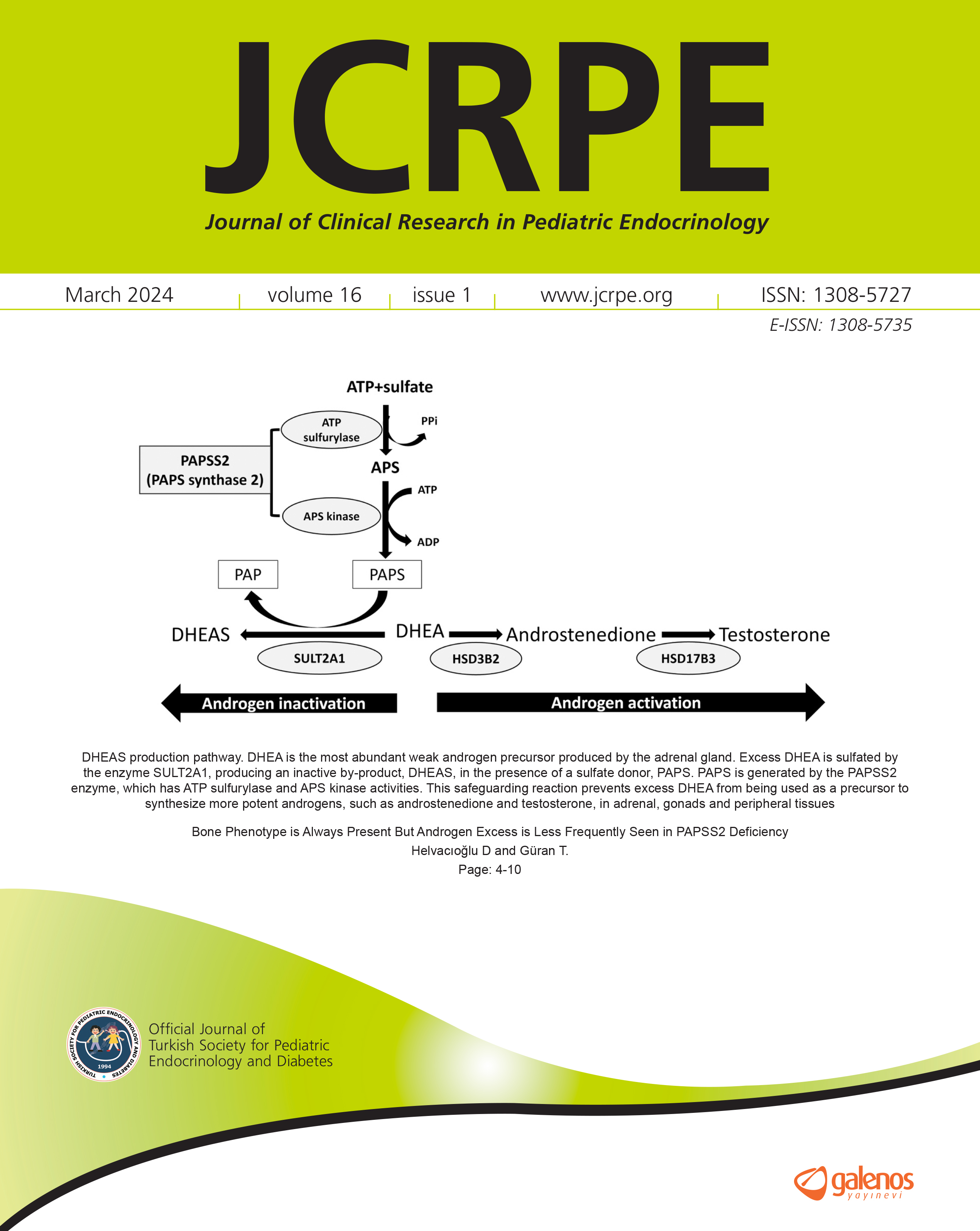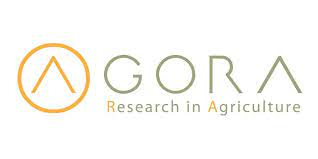Decline in the Age of Menarche in Istanbul Schoolgirls Over the Last 12 Years
Tülay Güran1, Didem Helvacıoğlu1, Büşra Gürpınar Tosun1, Zehra Yavaş Abalı1, Fahriye Alır2, Yusuf Taha Arslan2, Giasim Molla2, Berk Şahin2, Mehmet Emir Sayar2, Zeynep Atay3, Belma Haliloğlu1, Korcan Demir4, Serap Turan1, Seyhan Hıdıroğlu5, Abdullah Bereket11Marmara University Faculty of Medicine, Department of Pediatric Endocrinology and Diabetes, İstanbul, Turkey2Marmara University Faculty of Medicine, İstanbul, Turkey
3İstanbul Medipol University Faculty of Medicine, Department of Pediatric Endocrinology and Diabetes, İstanbul, Turkey
4Dokuz Eylül University Faculty of Medicine, Department of Pediatric Endocrinology and Diabetes, İzmir, Turkey
5Marmara University Faculty of Medicine, Department of Public Health, İstanbul, Turkey
INTRODUCTION: Menarche is the endpoint of a sequence of maturational events of female puberty. The timing of menarche is a strongly heritable trait. However, secular trends suggest that lifestyle and environmental factors are important. To assess the trend in age at menarche (AAM), and its associated factors in İstanbul over the last 12 years.
METHODS: A cross-sectional study was carried out between March and April 2022 on schoolgirls aged 9-18 years. A predesigned and self-administered questionnaire was filled out anonymously by the students. The data of AAM was included in the statistical analysis if the time of AAM is remembered in both months and years. A probit model was used to calculate the median AAM. The findings were compared with those from a study performed 12 years ago in the same region of İstanbul.
RESULTS: Among 9000 girls to whom the questionnaire was distributed, 1749 (19.5%) responded. The median AAM of 1374 girls whose AAM information was considered valid was 12.04 years (95% confidence interval: 12.01-12.13), 0.7 years lower than was reported 12 years ago (p<0.0001). AAM was correlated positively with maternal AAM, and negatively with body mass index (BMI) standard deviation score and maternal educational status (p<0.0001, p<0.0001 and p=0.002), respectively. There was no correlation between the AAM and birth weight. Girls with BMI percentile ≥85% (n=251) had earlier menarche than the ones with BMI percentile <85% (n=1072) (11.5 vs. 12.1 years, p<0.0001). Among the mother-daughter pairs (n=1162), AAM of girls was 0.91 years (median 0.94 years) earlier than their mothers.
DISCUSSION AND CONCLUSION: The present study demonstrates a significant downward trend in the menarcheal age in İstanbul over the last twelve years. These findings support a strong contribution from genetic factors and BMI on AAM.
Corresponding Author: Tülay Güran, Türkiye
Manuscript Language: English



























